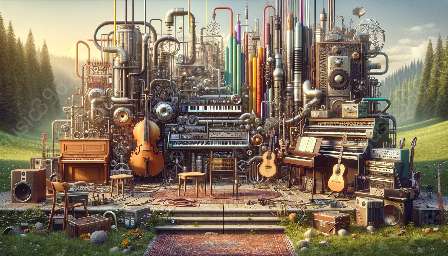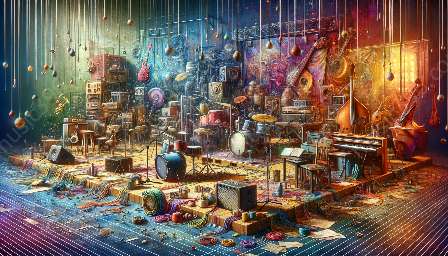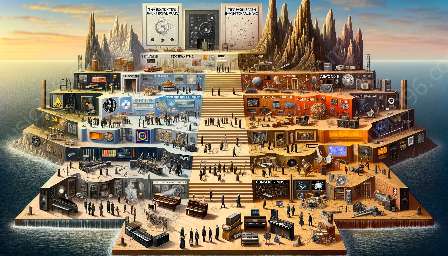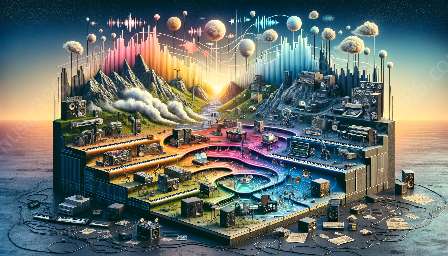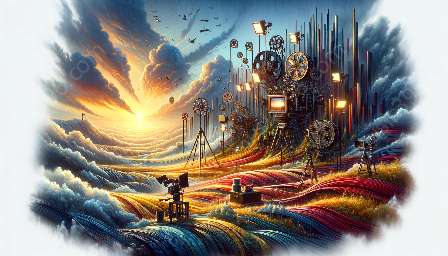Experimental and industrial music movements have deep historical roots that have shaped the evolution of music over the centuries. This topic cluster explores the historical contexts, techniques, and impact of these influential music movements.
Overview of Experimental Music
Experimental music is a genre that emphasizes the exploration of new sounds, techniques, and structures in composition. Historically, the roots of experimental music can be traced back to early 20th-century avant-garde movements, such as Dadaism and Futurism, which sought to break away from traditional musical conventions and embrace innovative approaches to sound creation.
One of the key figures in the development of experimental music is John Cage, whose compositions and philosophies challenged the traditional notions of music and paved the way for the exploration of unconventional sound sources and performance techniques. With the rise of electronic music technologies in the mid-20th century, experimental music further expanded its sonic possibilities, incorporating tape manipulation, synthesis, and computer-generated sounds.
Historical Context of Experimental Music
The historical context of experimental music is closely intertwined with the broader cultural and artistic movements of the 20th century. It emerged as a response to the rapid changes in society, technology, and communication, reflecting the desire for artistic expression that mirrored the complexities of the modern world.
Experimental music became a platform for musicians to challenge the status quo and push the boundaries of sonic experimentation. It thrived in underground communities and avant-garde circles, where artists sought to disrupt established musical norms and explore new sonic territories. The historical context of experimental music is also marked by its intersections with visual arts, performance art, and multimedia collaborations, fostering a multidisciplinary approach to creative expression.
Techniques of Experimental Music
The techniques employed in experimental music are diverse and often defy traditional musical conventions. Musicians and composers utilize a wide range of approaches, including extended instrumental techniques, found object percussion, prepared piano, electronic manipulation, and aleatory (chance) composition. The use of non-traditional instruments, unconventional performance methods, and the incorporation of environmental sounds are also central to the experimental music ethos.
Furthermore, the concept of indeterminacy, popularized by John Cage, remains a fundamental technique in experimental music, allowing for chance elements and improvisation to shape the sonic outcome of a composition. Through the incorporation of unconventional techniques and innovative approaches to sound production, experimental music challenges listeners to engage with music in new and unconventional ways.
Overview of Industrial Music
Industrial music, as a genre, emerged in the late 1970s and early 1980s, marked by its provocative and abrasive sonic characteristics. It draws influence from the industrial soundscape, incorporating elements of noise, repetition, and mechanical rhythms to create a confrontational auditory experience. The genre is often associated with themes of dystopia, technology, and societal critique, reflecting the tumultuous social and economic landscapes of its historical milieu.
Industrial music is also notable for its utilization of non-musical sources, such as found sounds, field recordings, and ambient noise, to construct its sonic palette. This approach aligns with the genre's commitment to subverting traditional musical norms and embracing unconventional sonic materials.
Historical Context of Industrial Music
The historical context of industrial music is deeply rooted in the socio-political landscape of the late 1970s and early 1980s. Emerging in the aftermath of post-punk and amidst the rise of electronic music technologies, industrial music served as a response to the alienation, disillusionment, and industrialization of society. Artists and musicians sought to capture the dissonance and disarray of the urban environment, reflecting the dehumanizing effects of modernity and the mechanization of daily life.
Industrial music also flourished within countercultural and underground communities, where it provided a voice for dissent and critique against societal norms and power structures. Its historical context is further interconnected with the visual arts, performance art, and experimental film, fostering a multimedia and interdisciplinary approach to creative expression that defied traditional aesthetic boundaries.
Techniques of Industrial Music
The techniques employed in industrial music align with its confrontational and subversive ethos. Artists often use distortion, feedback, and aggressive rhythms to construct cacophonous and unsettling sonic landscapes. Furthermore, the use of sampling, tape manipulation, and electronic processing became integral to the genre, allowing for the incorporation of found sounds and industrial noises into musical compositions.
The concept of DIY (do-it-yourself) production and distribution also played a significant role in shaping the techniques of industrial music, empowering artists to create and disseminate their music outside of mainstream industry channels. This approach contributed to the genre's autonomy and enabled a DIY subculture that thrived on artistic independence and anti-establishment sentiments.
Impact and Legacy
Both experimental and industrial music movements have left a lasting impact on the trajectory of music history. Their innovative techniques, challenging approaches, and critical perspectives have influenced subsequent generations of musicians and shaped the evolution of various music genres. The experimental and industrial music movements continue to inspire contemporary artists to push the boundaries of sonic experimentation and confront societal norms through music.
Understanding the historical contexts, techniques, and impact of these influential music movements provides valuable insights into the dynamic interplay between art, culture, and society. By exploring the rich tapestry of experimental and industrial music, we gain a deeper appreciation for the diversity and complexities of musical expression throughout history.














